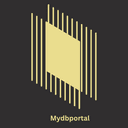Introduction
Welcome to the official Early documentation for MyDBPortal. This is your comprehensive guide to understanding, using, and mastering our platform. Whether you're a solo developer launching a new project or a team managing complex infrastructure, our goal is to make your database workflow effortless.
MyDBPortal is built on a core philosophy of immediacy and ease of use. We believe you should get from sign up to a functional, production-ready database in seconds, with zero friction. This documentation will walk you through how we achieve that.
Getting Started
1. Create an Account
Sign up for a free account. You'll get immediate access to our generous free tier, which includes 5 databases and hosting on our shared servers.
2. Create a Database
From your main dashboard, click "Create New Database". The creation flow is instant and intuitive:
- Provide a name for your database.
- Select your desired engine (e.g., PostgreSQL, MySQL).
- Choose a server: either a free tier server or connect your own.
- Click create. Your database is provisioned instantly.
3. Connect Your App
Once created, you'll find the connection string in your database's detail page. Use this string in your application's environment variables to connect and start building.
DATABASE_URL="postgres://user:[password]@host:port/dbname"Architecture
MyDBPortal uses a robust, modern architecture designed for security, performance, and real-time communication. The core components are the Web Platform, the Job Queue System, and the MyDBPortal Agents.
MyDBPortal Agents
Agents are lightweight Node.js binaries that run on your personal servers. They act as a secure bridge between your infrastructure and our platform.
- Handle server setup and account linking.
- Manage long-running jobs like backups and migrations.
- Perform local database operations and monitor server health.
To install an agent, download the binary from the "Server Management" section of your dashboard and run it with your unique API token.
# Download the agent for your OS
wget https://api.mydbportal.com/agents/linux-x64
# Make it executable
chmod +x ./linux-x64
# Run with your token
./linux-x64 --token=YOUR_API_TOKEN_HEREDashboard Guide
The dashboard is your central hub for all database activities. Here's a quick overview of the key sections:
- /dashboard: Your main workspace, listing all databases.
- /dashboard/database/[id]: Manage a specific database instance.
- /dashboard/ai-studio: (Enterprise) Access AI-powered tools.
- /dashboard/servers: Connect and manage your own servers.
- /dashboard/settings: Manage your account and API tokens.
CLI Reference
Our official CLI tool allows you to manage every aspect of your account from the terminal. Installation is simple via npm.
npm install -g mydbportal-cliOnce installed, log in with your credentials.
mydb loginFrom there, you can list, create, and manage databases.
# List all databases
mydb db list
# Create a new PostgreSQL database
mydb db create my-new-db --engine postgresAPI Reference
Coming soon. Our public REST and WebSocket APIs will allow for deep, programmatic integration with your own tools and workflows.
